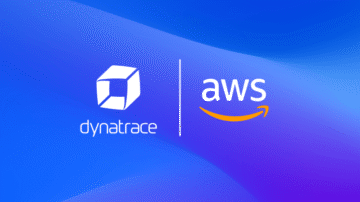
Organizations need a scalable and cost-effective way to meet ever-increasing demands. Find out how hyperscale computing works, its benefits, and its importance to a digital-first approach.
Recently, there has been an unprecedented spike in organizations embracing digital transformation. Unforeseen events and changing consumer habits have accelerated the need for companies to be digital-first. Therefore, these organizations face increasing pressure to develop for cloud-native platforms and embrace hyperscale computing so resources such as server capacity can rapidly scale up or down to meet business needs.
The digital way in which we interact with businesses isn’t limited to consumers. Digital transformation and the ability to work from anywhere also empower employees. But the digital future is reliant on the power of the cloud and requires the best technology to match.
This begs the question: Is hyperscale computing key to unlocking this future?
What is hyperscale computing?
Hyperscale refers to an architecture’s ability to scale appropriately as organizations add increased demand to the system. Hyperscalers are cloud providers that offer services and seamless delivery to build a robust and scalable application environment. Some examples include Amazon Web Services, Microsoft, and Google.
Hyperscale computing is important because it enables IT teams to automatically scale and respond immediately to increased demand. But how does it work?
How does hyperscale computing work?
Hyperscale infrastructure consists of vast numbers of servers that are horizontally networked with one another in a data center. It’s typically seen in big data or cloud computing settings, and it joins compute, storage, and virtualization layers into a unified architecture. This allows IT teams to scale resources up or down as needed depending on their organization’s performance requirements.
A load balancer monitors the amount of data that must be processed, fulfilling requests and distributing resources as required. If the load balancer detects an increased workload for servers, it simply adds servers to the pool.
Hyperscale data centers vs. enterprise data centers: What’s the difference?
While it’s natural to assume hyperscale data centers (HDCs) are just larger versions of standard enterprise data centers, that’s not the case.
When cloud computing environments hyperscale, they do so on a massive and global scale while executing this transition with extreme speed. The goal is always the same: Build a robust system that meets the organization’s requirements — whether that’s for cloud computing, big data, storage, or a combination of all three. Hyperscale environments are ideally positioned to meet these requirements because, in addition to being highly scalable, they are highly responsive, cost-effective, agile, and secure.
Enterprise data centers, by contrast, use a different model. They’re generally centralized and much smaller than HDCs, which can involve anywhere from thousands to millions of servers that take up considerable space. Organizations must also design enterprise data centers with redundancy in mind, ensuring business continuity in the event of a power outage, a storm, or another unexpected event that affects operations.
What really sets a hyperscale data center apart from its enterprise counterpart, however, is its lack of limitations. Organizations can tap hyperscale capabilities to uniformly scale out greenfield applications, customizing environments to match their exact requirements and exercising a high degree of control over every element and policy of the computing experience.
Weighing the benefits of hyperscale computing
Hyperscale computing offers multiple business benefits when compared with traditional enterprise data centers, including the following:
- Simplified management. Organizations can more easily manage their shifting computing needs.
- Less downtime. Hyperscale computing reduces the cost of disruption, minimizing downtime due to increased demand or other issues.
- Increased operational efficiency. By reducing the layers of control, it’s easier to manage modern computer operations.
- Scalability. Organizations can scale up or down based on demand, including taking servers offline as desired to save costs.
Additionally, hyperscale environments allow for simpler data backups and make data easier to locate. Hyperscale computing also empowers organizations to scale far more cost-effectively while improving security. Organizations with big data analytics requirements or demanding cloud computing projects can especially benefit from hyperscale computing.
The benefits aren’t limited to these use cases, of course. Any organization that’s pursuing digital transformation can reap the rewards of hyperscale. Digital transformation is a continuous process. Organizations need to stay the course, using multicloud platforms to meet user demands proactively and proficiently, while driving business growth.
Partnering with a hyperscale provider is key to keeping these platforms up and running and eliminating disruption to a consumer’s digital shopping experience or remote workers collaborating from different regions of the world, for example.
With all these transitions, however, challenges will arise due to the increasing complexity of these dynamic environments. For example, log monitoring and log analytics are even more essential in a hyperscale scenario. That’s why it’s important to find ways to automate the influx of data hyperscale providers bring and centralize logs, metrics, and trace data before the ephemeral cloud environment or serverless function spins down.
Automatic and intelligent observability for hyperscale
Understanding multicloud environments requires automation, as it can handle the scale of every component in an enterprise ecosystem, as well as the interdependencies. This alleviates manual tasks and shifts the focus to driving substantial business results.
Dynatrace delivers automatic and intelligent observability at scale for cloud-native workloads and enterprise applications to ensure end-to-end multicloud distributed tracing. This helps organizations transform faster by taming modern cloud complexity with observability, automation, and intelligence in a single platform.


